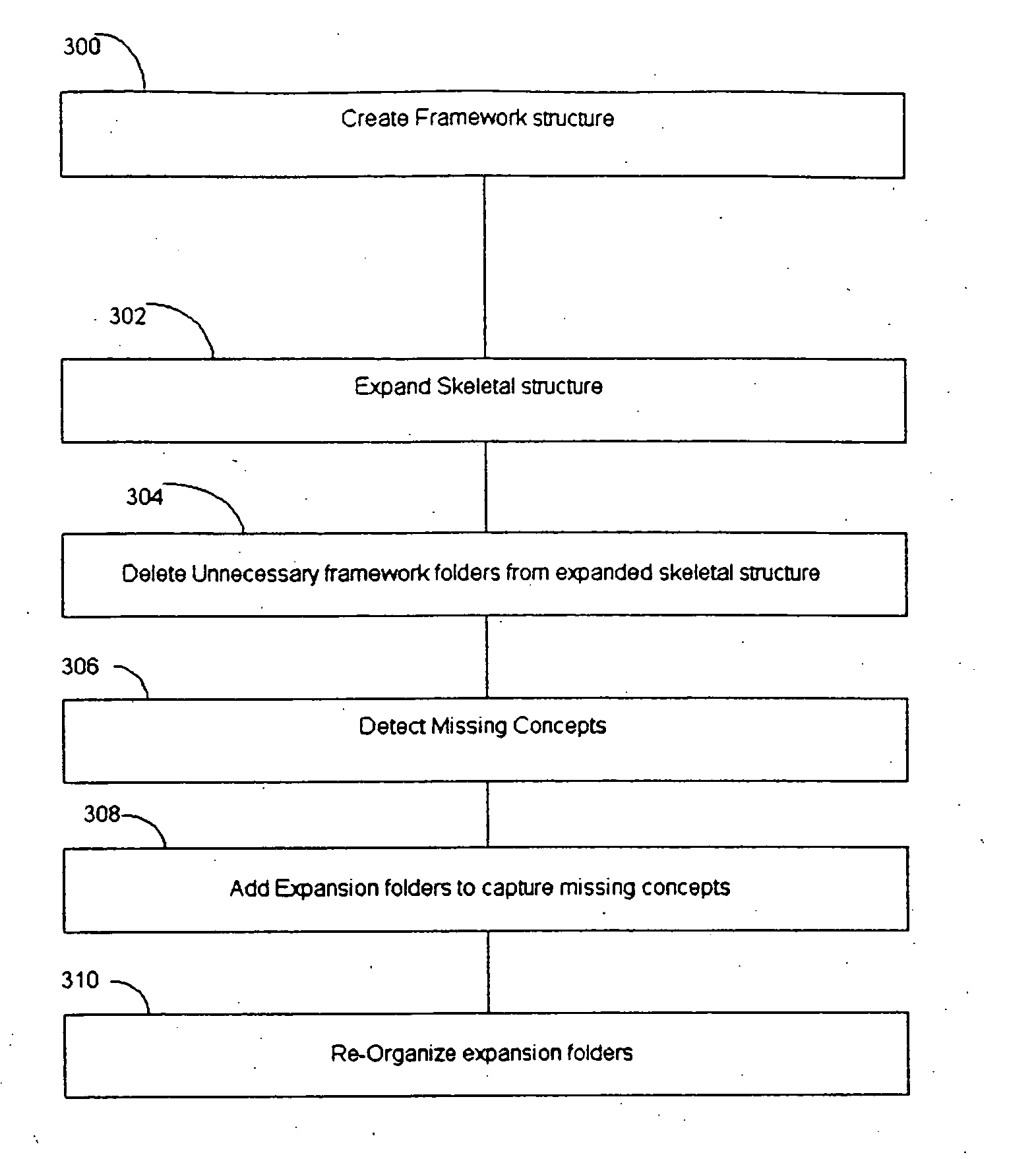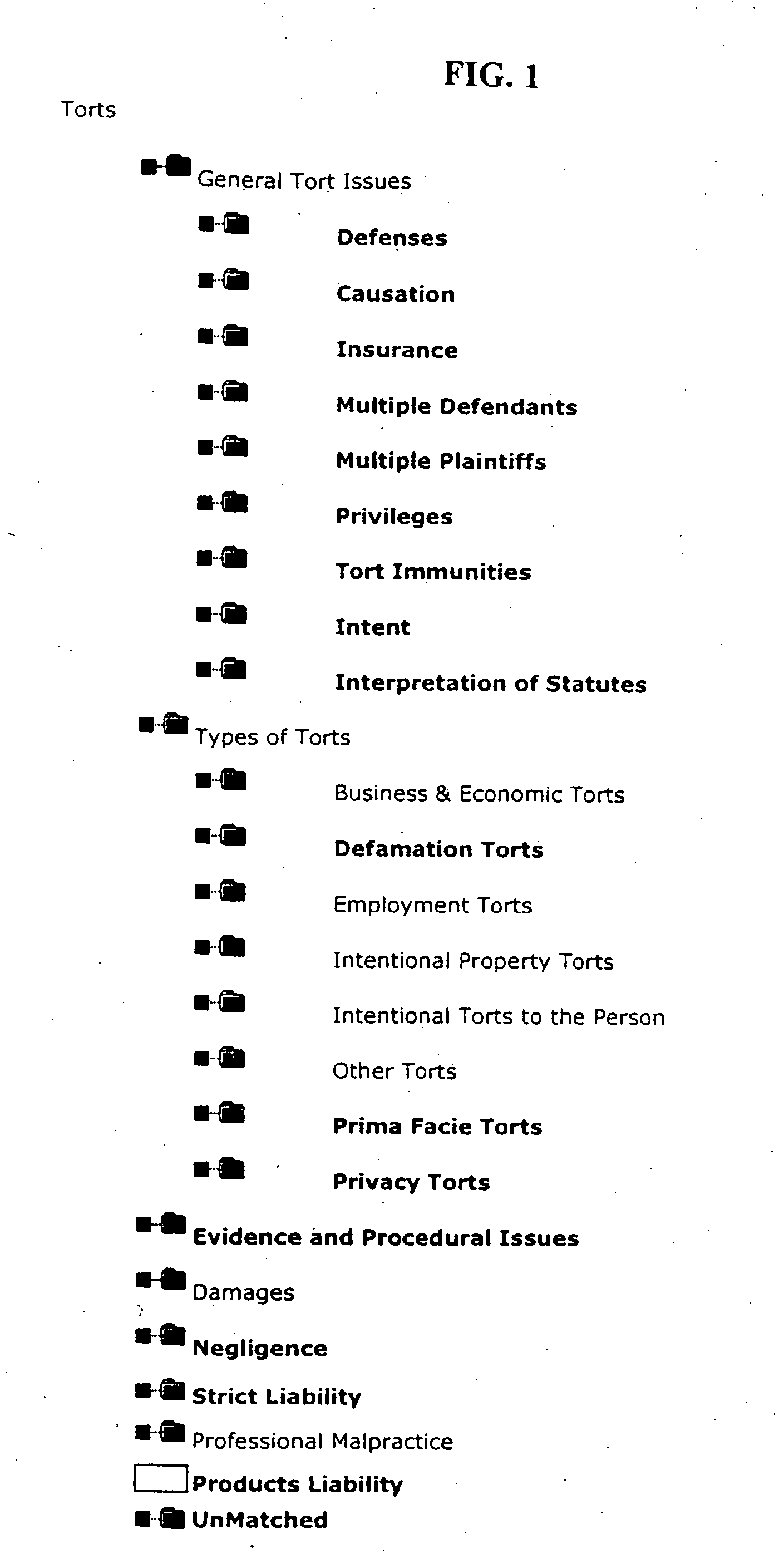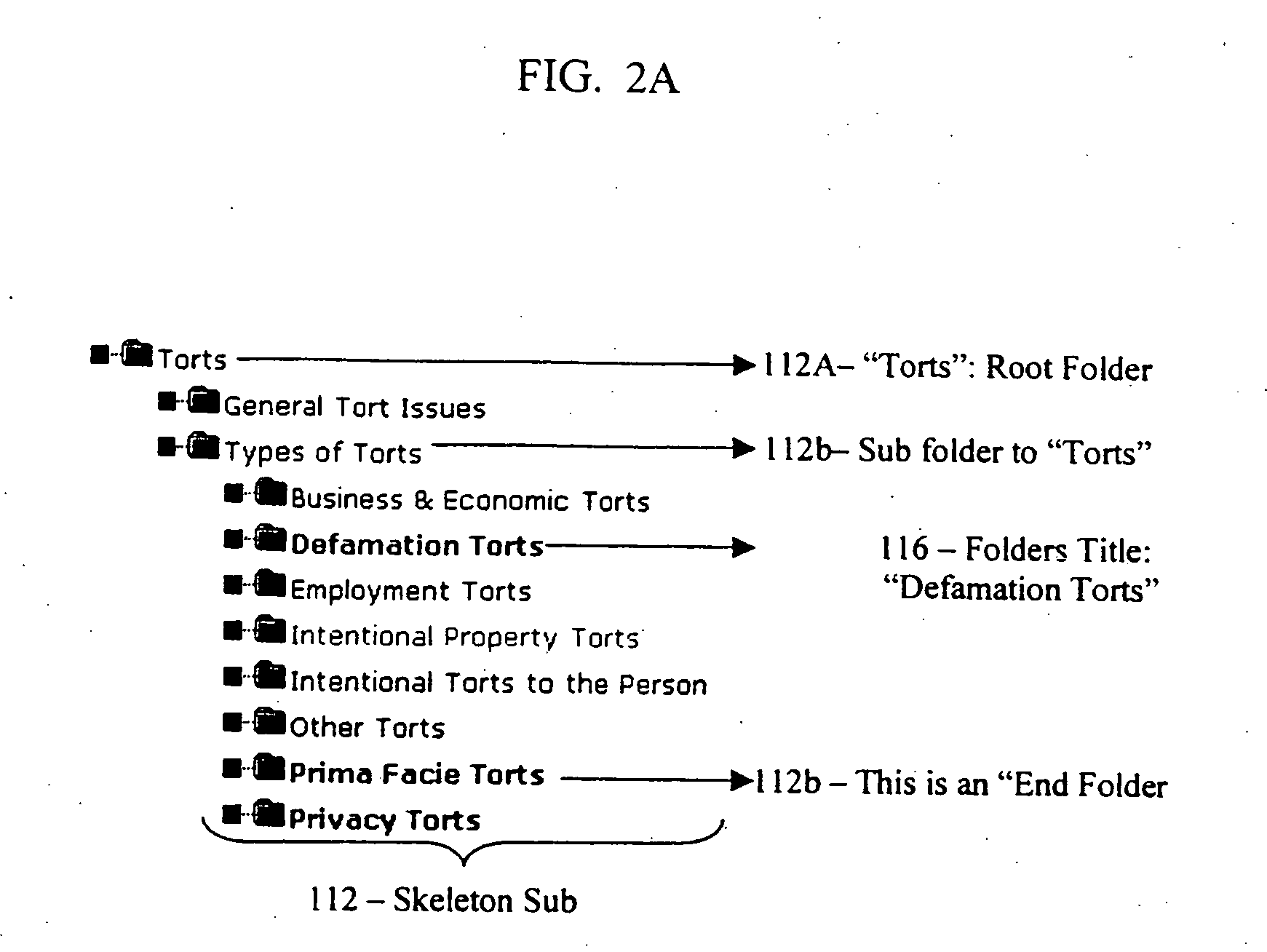Methodology for constructing and optimizing a self-populating directory
a directory and self-population technology, applied in the field of method for constructing and optimizing a directory structure and tools, can solve the problems of loss of information, unusable records, and irrelevant records, and achieve the effect of separating relevant records from irrelevant records, and reducing the number of users
- Summary
- Abstract
- Description
- Claims
- Application Information
AI Technical Summary
Problems solved by technology
Method used
Image
Examples
Embodiment Construction
[0028] The present invention provides a methodology for automatically expanding and optimizing a directory of a field of knowledge. A directory 100 (FIG. 1) is a hierarchical collection of content folders 102 to which text expressing a specified concept is mapped.
[0029] Notably, each content folder 102 is associated with a particular concept or idea (label 106) and with criteria (definition 108) for detecting the concept within a paragraph or textual fragment, where a textual fragment is a unit of text which is defined in terms of a number of sentences or paragraphs. Textual fragments are compared against the criteria (definition 108) of the respective folders 102 according to pre-defined rules, with textual fragments satisfying the criteria being mapped to the folder(s).
[0030] The position of the content folder 102 within the directory 100 defines the context for interpreting the concept. The methodology of the present invention provides a one-to-one function between the definiti...
PUM
 Login to View More
Login to View More Abstract
Description
Claims
Application Information
 Login to View More
Login to View More - R&D
- Intellectual Property
- Life Sciences
- Materials
- Tech Scout
- Unparalleled Data Quality
- Higher Quality Content
- 60% Fewer Hallucinations
Browse by: Latest US Patents, China's latest patents, Technical Efficacy Thesaurus, Application Domain, Technology Topic, Popular Technical Reports.
© 2025 PatSnap. All rights reserved.Legal|Privacy policy|Modern Slavery Act Transparency Statement|Sitemap|About US| Contact US: help@patsnap.com



